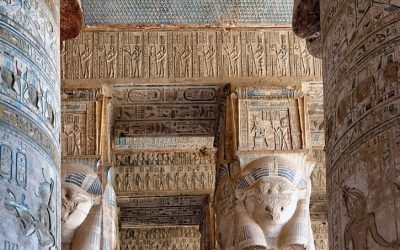Historical Overview of the USD to EGP Exchange Rate
The exchange rate between the US dollar (USD) and the Egyptian pound (EGP) has a historical significance that reflects Egypt’s economic stability and monetary policies over the years. Understanding the movements of the USD to EGP rate provides insights into Egypt’s economic challenges, reforms, and its relationship with global markets. This overview traces key periods of fluctuation and stabilization, highlighting factors that have influenced the value of the Egyptian pound against the U.S. dollar throughout history.
Pre-1970s Exchange Rate Trends
The exchange rate between the US dollar (USD) and the Egyptian pound (EGP) has a complex history that reflects economic, political, and social changes in Egypt prior to the 1970s. In the early 20th century, the EGP was pegged to the British pound sterling, which influenced its relationship with the US dollar. During this period, the exchange rate remained relatively stable due to colonial economic policies and foreign influence. Following Egypt’s independence in 1952, efforts to establish a distinct monetary policy led to fluctuations in the exchange rate. The 1950s and 1960s saw a period of managed floating, with the government intervening periodically to stabilize the currency amid political upheaval and economic development efforts. The dollar to EGP rate experienced gradual devaluations and adjustments as Egypt sought to reconcile inflation, balance of payments issues, and sovereign economic strategies. Overall, before the 1970s, the USD to EGP exchange rate was characterized by stability within a governed framework, yet marked by notable shifts driven by external economic pressures and internal policy changes.
Impact of the 1970s Oil Crisis
The USD to EGP exchange rate has experienced significant fluctuations over the years, influenced by various economic and geopolitical factors. One pivotal event that impacted this exchange rate was the 1970s oil crisis, which had profound effects on the global economy and Egypt’s financial landscape. During the oil crisis, oil-exporting countries, particularly in the Middle East, amassed considerable wealth, leading to increased foreign investments and economic shifts in the region. Egypt, as a neighboring country heavily dependent on subsidies and imports, faced economic pressures, resulting in adjustments to its currency policies and exchange rates. The crisis also contributed to inflationary pressures and currency devaluations, which affected the USD to EGP rate. Overall, the 1970s oil crisis marked a turning point in the historical exchange rate trends between the dollar and the Egyptian pound, setting the stage for subsequent economic developments in Egypt and the broader Middle East.”
Major Reforms and Currency Policies in the 1980s and 1990s
The exchange rate between the US dollar (USD) and the Egyptian pound (EGP) has experienced significant changes over the decades, influenced by various economic reforms and policy decisions. During the 1980s and 1990s, Egypt underwent several major monetary adjustments aimed at stabilizing and reforming its currency system to foster economic development and attract foreign investment.
In the 1980s, Egypt initially maintained a fixed exchange rate regime, which was part of broader economic policies aimed at controlling inflation and managing balance of payments issues. However, persistent fiscal deficits and inflationary pressures made it difficult to sustain a stable exchange rate, leading to periodic devaluations.
In the 1990s, Egypt began adopting more liberal economic policies, including gradual currency reforms. The country moved towards a more flexible exchange rate system, reducing reliance on strict fixed peg policies. Notable reforms included efforts to liberalize the currency market and incorporate monetary policy tools to control inflation and stabilize the EGP’s value against the USD.
The Egyptian government also implemented policies to encourage foreign exchange inflows, such as facilitating foreign investment and remittances, which impacted the USD to EGP exchange rate. Despite these efforts, the exchange rate remained relatively volatile, reflecting Egypt’s ongoing economic challenges and the influence of external factors.
- Early 1980s: Fixed exchange rate regime aimed at controlling inflation but faced sustainability issues.
- Mid-1980s: Periodic devaluations to address trade imbalances and fiscal deficits.
- Late 1980s and early 1990s: Introduction of reforms to liberalize currency and reduce government intervention.
- 1990s: Shift towards a semi-flexible or managed float system, with policies supporting currency stability and economic growth.
- Throughout the decade: Political and economic challenges influencing the USD to EGP exchange rate, with gradual appreciation efforts.
Post-2000 Currency Liberalization and Fluctuations
The USD to EGP exchange rate has experienced significant fluctuations since the turn of the 21st century, reflecting Egypt’s evolving economic policies and global financial trends. Following the early 2000s, the Egyptian pound largely maintained a relatively stable peg to the US dollar, supported by government policies aimed at attracting foreign investment and maintaining economic stability. However, the period post-2011, marked by the Arab Spring and subsequent political upheavals, saw increased economic volatility and pressure on the currency. In response, Egypt embarked on currency liberalization measures, including significant devaluations and the eventual flotation of the EGP in 2016, which led to a sharp depreciation of the pound against the dollar. This move aimed to boost exports, attract foreign direct investment, and stabilize the economy amidst dwindling foreign reserves. Since then, the USD/EGP exchange rate has witnessed periodic fluctuations influenced by global economic conditions, international aid flows, inflation rates, and monetary policy adjustments. Overall, the post-2000 period showcases a transition from a pegged exchange rate system to a more flexible currency regime, reflecting Egypt’s efforts to adapt to changing economic realities and global market dynamics.
Factors Influencing USD to EGP Exchange Rate
The USD to EGP exchange rate is influenced by a variety of economic, political, and global factors that can cause fluctuations in the value of the Egyptian pound against the US dollar. Understanding these factors is essential for investors, businesses, and individuals who are engaged in currency exchange and international trade. From monetary policy decisions to geopolitical stability, numerous elements play a role in shaping the dynamics of the dollar to Egyptian pound exchange rate.
Economic Indicators and Macroeconomic Conditions
The exchange rate between the US dollar (USD) and the Egyptian pound (EGP) is influenced by various economic indicators and macroeconomic conditions that reflect the overall health of both economies. These factors can cause fluctuations in the USD to EGP rate, affecting international trade, investments, and economic stability.
- Interest Rates: Higher interest rates in the US often attract foreign investment, increasing demand for the USD and strengthening its value against the EGP.
- Inflation Rates: Elevated inflation in Egypt can devalue the EGP, leading to a higher USD/EGP exchange rate as the purchasing power of the pound diminishes.
- Balance of Payments: A deficit in Egypt’s balance of payments, due to higher imports than exports, can lead to a shortage of foreign currency reserves, causing the EGP to depreciate against the USD.
- Political Stability: Political events and stability influence investor confidence. Political uncertainty can result in capital outflows, weakening the EGP against the USD.
- Fiscal and Monetary Policies: Government spending and central bank policies, such as adjusting interest rates or currency interventions, directly impact exchange rate movements.
- Global Economic Conditions: Global economic stability and growth prospects influence investor behavior, affecting demand for the USD as a safe haven currency and impacting the USD/EGP rate.
Government Policies and Interventions
Government policies and interventions play a significant role in shaping the USD to EGP exchange rate. Central banks and government authorities can influence the currency market through direct interventions, such as buying or selling foreign currency reserves to stabilize or manipulate the exchange rate. Additionally, policies related to monetary discipline, inflation control, and foreign exchange controls can affect investor confidence and currency value. For instance, measures that promote economic stability and encourage foreign investment tend to strengthen the EGP, while policies that lead to economic uncertainty or inflation can cause depreciation against the USD. Political stability, fiscal discipline, and regulatory frameworks established by the government are crucial in maintaining a desirable exchange rate and fostering a healthy economic environment for the Egyptian pound against the dollar.
Foreign Investment and Remittances
The USD to EGP exchange rate is influenced by a variety of economic factors, including foreign investment and remittances. These elements play a significant role in shaping the currency’s value, reflecting the country’s economic health and international financial relationships.
- Foreign Investment: Increased foreign direct investment (FDI) in Egypt can lead to a higher demand for the local currency, the EGP, which may appreciate its value against the USD. Conversely, reduced foreign investment can weaken the EGP as capital outflows occur.
- Remittances: Remittances from Egyptians working abroad are a vital source of foreign currency inflows. A rise in remittances boosts the supply of USD when converted into EGP, impacting the exchange rate positively for the local currency. Conversely, fluctuations in remittance levels can cause volatility in the USD/EGP rate.
- Macroeconomic Stability: Factors such as inflation rates, government debt, and economic growth influence investor confidence, affecting both foreign investments and remittance patterns.
- Government Policies: Currency exchange regulations, monetary policy decisions, and efforts to attract foreign investors can directly impact the USD to EGP exchange rate.
Global Market Trends and Petroleum Prices
The USD to EGP exchange rate is shaped by various factors, including global market trends and petroleum prices, which significantly impact Egypt’s economy. Fluctuations in the global financial markets can influence investor confidence and capital flows, thereby affecting currency values. When international markets are volatile, investors may seek safer assets, leading to fluctuations in exchange rates.
Petroleum prices play a crucial role because Egypt is a net importer of oil. Rising oil prices increase import costs and can exert pressure on the EGP, leading to depreciation against the USD. Conversely, when petroleum prices decline, the economic burden on Egypt decreases, often stabilizing or strengthening the EGP.
Additionally, broader global trends, including interest rate changes by major economies like the US, geopolitical developments, and international trade policies, also influence USD to EGP movements. A strengthening USD, for instance, tends to put downward pressure on the EGP, especially if lacking sufficient foreign reserves or economic stability. Understanding these interconnected factors can help anticipate currency fluctuations and inform financial decisions regarding the dollar and Egyptian pound.
Inflation Rates and Fiscal Deficits
The USD to EGP exchange rate is shaped by a variety of economic factors, with inflation rates and fiscal deficits playing significant roles. When Egypt experiences higher inflation compared to the United States, the EGP tends to depreciate against the USD, as the purchasing power of the Egyptian pound diminishes. Conversely, stable or low inflation supports a stronger EGP, attracting foreign investment and maintaining currency value. Fiscal deficits, which occur when a government’s expenditures surpass its revenues, can also influence the exchange rate. Large deficits may lead to increased borrowing or the depletion of foreign reserves, exerting downward pressure on the EGP. Additionally, persistent fiscal imbalances can undermine investor confidence, prompting capital outflows and further devaluation. Together, these factors contribute to the complex dynamics determining the dollar-to-Egyptian pound rate, impacting trade, investment, and economic stability in Egypt.
Current USD to EGP Exchange Rate and Market Dynamics
The current USD to EGP exchange rate is a vital indicator of Egypt’s economic stability and reflects various market forces. Fluctuations in the exchange rate are influenced by a combination of government policies, foreign investment, and global economic conditions. Understanding these market dynamics helps investors, businesses, and individuals make informed decisions in a constantly evolving financial landscape.
Recent Trends and Data Analysis
The USD to EGP exchange rate has experienced notable fluctuations driven by various economic factors affecting both the Egyptian economy and global dollar movements. Recent market dynamics indicate that the Egyptian pound has been somewhat volatile, influenced by shifts in foreign exchange reserves, government policies, and external economic conditions such as oil prices and geopolitical stability. Over the past months, there has been a trend toward stabilization after periods of significant devaluation, supported by reforms and foreign investments. Data analysis reveals that the exchange rate often responds to central bank interventions and international financial market trends, reflecting broader economic confidence. Continued monitoring of macroeconomic indicators and policy adjustments will be crucial in understanding future movements in the dollar to Egyptian pound exchange rate.
Influence of Political Stability and Economic Reforms
The current USD to EGP exchange rate reflects the ongoing fluctuations influenced by both global and domestic factors. Market dynamics are shaped by changes in foreign investment, tourism revenue, and trade balances, which all impact the strength of the Egyptian pound against the US dollar. Political stability is a crucial element in determining currency value; periods of political uncertainty often lead to decreased investor confidence and currency depreciation. Conversely, political reforms and efforts to improve governance tend to bolster investor trust, supporting a more stable exchange rate. Additionally, economic reforms aimed at liberalizing the economy, controlling inflation, and managing fiscal deficits have significant effects on the dollar-Egyptian pound exchange rate, contributing to a more resilient currency environment. Overall, the interplay of market forces, political stability, and economic policy reforms continues to shape the dynamics of the USD/EGP exchange rate.
Role of Central Bank of Egypt
The USD to EGP exchange rate is influenced by a combination of market forces, government policies, and economic conditions in Egypt. Currently, the Egyptian pound has experienced fluctuations against the US dollar due to factors such as inflation, foreign currency reserves, and international trade dynamics. Market dynamics are also impacted by investor sentiment, remittances, and tourism revenue, which can lead to short-term volatility.
The Central Bank of Egypt (CBE) plays a crucial role in managing the exchange rate and ensuring economic stability. It intervenes in the foreign exchange market by deploying reserves or adjusting monetary policies to control excessive fluctuations. The CBE aims to balance the need for a competitive exchange rate to support exports with the goal of maintaining inflation within targeted levels. Recently, Egypt has adopted a more flexible exchange regime to facilitate market-driven currency adjustments, with the CBE closely monitoring and responding to evolving economic indicators. This proactive management helps stabilize the dollar-Egyptian pound rate and supports the country’s broader economic objectives.
Impact on Import-Export Balance
The current USD to EGP exchange rate reflects ongoing market dynamics influenced by economic policies, geopolitical factors, and global financial trends. Fluctuations in the exchange rate can significantly impact Egypt’s import and export sectors, as a weaker or stronger dollar alters the cost of foreign goods and the competitiveness of Egyptian exports. When the USD appreciates against the EGP, imports become more expensive, potentially reducing import volumes and increasing inflationary pressures domestically. Conversely, a depreciation of the USD can boost export competitiveness by making Egyptian products more affordable internationally, improving the trade balance. Market forces, including foreign investment flows, government interventions, and global economic conditions, continuously shape this exchange rate, thereby influencing Egypt’s overall economic stability and trade dynamics.
Impact of USD to EGP Fluctuations on Egypt’s Economy
The fluctuations of the US dollar (USD) against the Egyptian pound (EGP) play a crucial role in shaping Egypt’s economic landscape. Changes in the USD/EGP exchange rate directly influence inflation, import and export dynamics, foreign investment, and overall economic stability. As Egypt’s economy is heavily reliant on import-dependent sectors and foreign currency reserves, shifts in the dollar’s value can have significant repercussions on everyday life and long-term economic growth.
Effects on Inflation and Consumer Prices
The fluctuations of the USD to EGP exchange rate significantly influence Egypt’s economy, particularly affecting inflation and consumer prices. When the US dollar appreciates against the Egyptian pound, imported goods become more expensive, leading to higher overall costs for products and raw materials. This increase often translates into elevated consumer prices, contributing to an inflationary environment that erodes the purchasing power of Egyptian consumers. Conversely, a depreciation of the USD relative to the EGP can help stabilize or reduce inflation by making imports cheaper, thereby alleviating pressure on consumer prices. These currency movements also impact export competitiveness and foreign investment, which in turn influence economic growth and stability in Egypt. Overall, the dollar-egp exchange rate plays a critical role in shaping macroeconomic conditions and the everyday cost of living for Egyptians.
Influence on Tourism and Foreign Investment
The fluctuations of the USD to EGP exchange rate significantly influence Egypt’s economy, affecting various sectors such as tourism and foreign investment. A decrease in the value of the EGP against the dollar can make imports more expensive, leading to inflationary pressures that impact everyday life and business costs. Conversely, a stronger dollar can boost remittance incomes from Egyptians abroad but may also make Egyptian exports less competitive on the global market.
For the tourism industry, the USD to EGP rate plays a crucial role. When the EGP weakens, foreign tourists find Egypt more affordable, potentially increasing tourist arrivals and revenue. However, persistent devaluation can also signal economic instability, discouraging some travelers and harming long-term tourism prospects.
Foreign investment is closely tied to currency stability. A depreciating EGP may deter investors due to concerns over currency risk and inflation, leading to reduced foreign direct investment inflows into Egypt. Conversely, a stable or strengthening EGP can foster investor confidence, encouraging investment in sectors like infrastructure, industry, and real estate, which are vital for economic growth.
Overall, the USD to EGP exchange rate fluctuations have complex and wide-ranging impacts on Egypt’s economic stability, tourism sector, and attractiveness to foreign investors, making currency management a key priority for policymakers.
Implications for Business and Trade Sectors
The fluctuations in the USD to EGP exchange rate significantly influence Egypt’s economy, affecting both macroeconomic stability and daily business operations. A depreciating EGP against the dollar can lead to increased import costs, pushing inflationary pressures higher and reducing consumers’ purchasing power. Conversely, a stronger EGP can make imports cheaper but may harm export competitiveness, impacting industries reliant on foreign markets. For the business sector, unstable exchange rates pose challenges in pricing, planning, and managing costs, leading to increased operational risks. Trade sectors such as tourism, manufacturing, and agriculture are particularly sensitive, where currency fluctuations can determine profitability, employment levels, and long-term growth prospects. Overall, maintaining a stable USD to EGP rate is crucial for fostering confidence among investors, stabilizing prices, and supporting sustainable economic development in Egypt.
Remittances and Currency Stability
The fluctuations of the USD to EGP exchange rate significantly influence Egypt’s economy, remittances, and currency stability. When the US dollar appreciates against the Egyptian pound, the cost of imported goods rises, leading to inflationary pressures that can strain consumers and businesses alike. Conversely, a weaker USD can make Egyptian exports more competitive, potentially boosting the country’s trade balance. The exchange rate also directly impacts remittances sent by the Egyptian diaspora, as a stronger dollar increases the local value of remitted funds, enhancing household income and consumption. However, persistent volatility can undermine confidence in the currency, prompting the Central Bank to intervene, which may lead to further instability. Overall, maintaining a stable USD/EGP rate is crucial for fostering economic growth, supporting remittance inflows, and preserving currency stability in Egypt.
Future Outlook and Projections for USD to EGP
The future outlook for the USD to EGP exchange rate is shaped by a variety of economic, political, and global factors. Projections indicate potential fluctuations influenced by Egypt’s monetary policies, foreign investment trends, and shifts in global dollar strength. Understanding these dynamics is essential for traders, investors, and businesses engaging with the Egyptian pound and the US dollar in the foreseeable future.
Analysts’ Forecasts and Experts’ Opinions
The future outlook for the USD to EGP exchange rate is influenced by various economic factors including Egypt’s economic growth, inflation rates, foreign investments, and geopolitical stability. Analysts and experts closely monitor these indicators to project potential currency fluctuations in the coming months and years.
According to recent forecasts, several key trends are expected to shape the dollar-to-egp exchange rate:
- Continued economic reforms and stabilization efforts in Egypt may strengthen the EGP, leading to a more balanced or even declining USD to EGP rate.
- Inflation control and improved foreign currency reserves could enhance confidence in the Egyptian pound, potentially restricting the dollar’s appreciation against the EGP.
- External factors such as U.S. monetary policy shifts and global market conditions will also impact the exchange rate movements.
- Foreign direct investment inflows and tourism recovery post-pandemic may bolster the EGP, exerting downward pressure on the USD/EGP rate.
- Experts forecast that if Egypt successfully implements its financial reforms and maintains political stability, the Egyptian pound may strengthen against the dollar in the medium term.
- Conversely, some analysts warn that global economic uncertainties and rising U.S. interest rates could lead to increased dollar strength, impacting the USD to EGP exchange rate.
- Projections suggest that the USD/EGP rate could fluctuate within a range over the next year, with some forecasts indicating a gradual decrease in the exchange rate if positive economic conditions persist.
Potential Government Policy Changes
The future outlook for the USD to EGP exchange rate depends on a variety of economic and political factors, including inflation rates, foreign investment levels, and overall stability within Egypt. Analysts predict that if economic reforms continue and foreign currency reserves improve, the Egyptian pound may experience stabilization or appreciation against the US dollar in the coming years.
Potential government policy changes could significantly influence this exchange rate trajectory. For instance, policymakers might implement measures such as tightening foreign exchange controls, adjusting interest rates, or engaging in currency interventions to manage fluctuations. Additionally, efforts to attract more foreign direct investment or to secure international financial aid and support might bolster the strength of the EGP. Conversely, any political instability or economic disruptions could lead to increased volatility and a depreciation of the pound against the dollar. Overall, close attention to governmental policy directions will be crucial for predicting future movements in the USD to EGP exchange rate.
Global Economic Factors Impacting Egypt
The future outlook for the USD to EGP exchange rate is influenced by various economic, political, and global factors. As Egypt continues to implement economic reforms and seek foreign investment, the stability of the Egyptian pound may improve, potentially leading to a more stable or slightly appreciated currency against the dollar. However, fluctuations remain possible due to external shocks and shifts in global financial markets.
Global economic factors significantly impact Egypt’s currency prospects. Changes in oil prices can affect Egypt’s trade balance, while fluctuations in the US dollar on international markets directly influence the USD to EGP rate. Additionally, geopolitical developments, such as regional tensions or international economic policies, can impact investor confidence and capital flows into Egypt.
Institutional reforms and efforts to diversify the economy could bolster confidence in the EGP, fostering a more favorable exchange rate trend. Conversely, adverse global conditions, such as a global recession or increased interest rates in major economies, might puts pressure on the Egyptian pound, leading to increased volatility. Overall, maintaining stability will depend on both internal reforms and the resilience of the global economic environment.
Risks and Opportunities for Currency Stability

The future outlook for the USD to EGP exchange rate depends on a combination of economic, political, and geopolitical factors. Projections suggest that if Egypt continues to implement reforms, maintains a stable macroeconomic environment, and attracts foreign investment, the EGP may experience moderate appreciation or stabilization against the USD. However, global economic uncertainties, changes in oil prices, or shifts in US monetary policy could introduce volatility into the exchange rate.
Risks to currency stability include reliance on volatile international capital flows, inflationary pressures, and political instability. External shocks such as fluctuations in commodity prices or geopolitical tensions can also undermine confidence in the EGP. Conversely, opportunities for stability exist through strengthened economic reforms, improved foreign reserves, and sustained foreign direct investment, which can bolster the currency’s resilience and foster long-term stability.





0 Comments